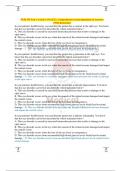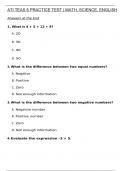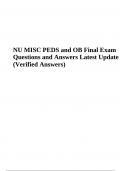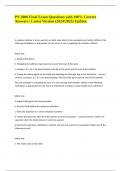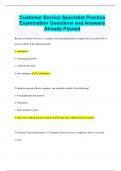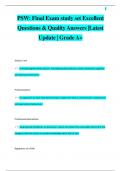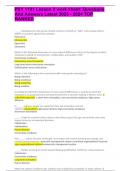Exam (elaborations)
NUR 155 Test 1 (Crisis 1 NCLEX), Comprehensive Exam Questions & Answers (With Rationales)
- Course
- Institution
NUR 155 Test 1 (Crisis 1 NCLEX), Comprehensive Exam Questions & Answers (With Rationales)-In your patient's health history you read that the patient has a cataract in the right eye. You know that this eye disorder can be best described by which statement below? A. This eye disorder is caused by in...
[Show more]
